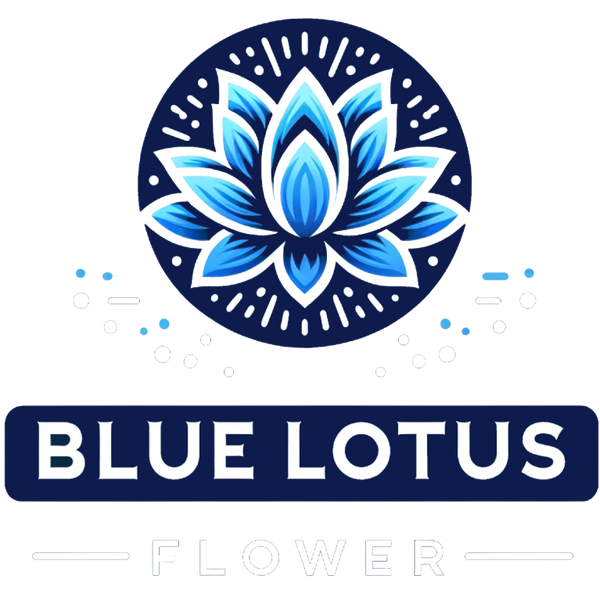The blue lotus flower, known scientifically as Nymphaea caerulea and often referred to as the Egyptian lotus, has captured the imagination of cultures throughout history. Its striking beauty and psychoactive properties have led to its use in various traditional practices, particularly in ancient Egyptian rituals. This article explores the health benefits, practical applications, and the psychoactive effects of the blue lotus flower, alongside insights into its historical significance and active compounds.
What Are the Health Benefits of Blue Lotus Flower?
What are the potential health benefits of blue lotus?
The potential health benefits of blue lotus flower are vast, with many users advocating for its calming and euphoric effects. Traditionally, the blue lotus has been used to promote relaxation and alleviate stress, making it a popular choice for those seeking natural remedies. Some studies suggest that the blue lotus may help in managing symptoms of anxiety and depression, providing a gentle alternative to more conventional treatments. Additionally, the flower has been touted for its potential benefits in enhancing sexual health, including aiding conditions like erectile dysfunction.
How does blue lotus affect the body and mind?
The blue lotus flower is known for its ability to induce a state of euphoria, which can significantly affect both the body and mind. When consumed, particularly in the form of blue lotus tea or extract, it interacts with various receptors in the brain, including dopamine receptors. This interaction may enhance mood, promote relaxation, and provide a soothing effect on the nervous system. As a result, individuals often report feelings of tranquility and decreased anxiety levels after using blue lotus, highlighting its potential as a natural anxiolytic.
What scientific evidence supports the health claims of blue lotus?
How to Use Blue Lotus: Practical Applications
What are the common uses of blue lotus extract?
Blue lotus extract is commonly used in various forms, including tinctures, capsules, and teas. The extract can be added to herbal blends or consumed directly to experience its calming effects. Many users prefer blue lotus tea, as it allows for an easy and enjoyable way to incorporate the flower’s benefits into their daily routine. Additionally, blue lotus extract can be utilized in aromatherapy, where its pleasant scent can enhance relaxation and create a serene atmosphere.
How can you make blue lotus tea?
Making blue lotus tea is a straightforward process that can be done at home. To prepare this soothing beverage, you'll need dried blue lotus flowers, hot water, and optional sweeteners or herbs. Start by steeping a tablespoon of dried blue lotus flowers in hot water for about 10-15 minutes. Strain the mixture to remove the flowers and enjoy the aromatic tea, either warm or chilled. For added flavor, consider incorporating other herbal ingredients, such as chamomile or mint, which complement the calming effects of the blue lotus.
What is the best way to take blue lotus for relaxation?
The best way to take blue lotus for relaxation largely depends on personal preference. Many individuals find that consuming blue lotus tea provides a gentle, enjoyable method to unwind after a long day. Alternatively, blue lotus extract in tincture form can be taken sublingually for a more concentrated effect. For optimal relaxation, it is recommended to use blue lotus in a quiet setting, perhaps during meditation or before bedtime, to enhance its calming properties. Regardless of the method chosen, the benefits of blue lotus can be effectively harnessed to promote a sense of peace and tranquility.
Understanding the Psychoactive Effects of Blue Lotus
What are the psychoactive effects of blue lotus?
The psychoactive effects of blue lotus are often described as mild yet pleasant. Users report experiences of euphoria and relaxation, making it a sought-after option for those looking to unwind or enhance their mood. The psychoactive properties of blue lotus can lead to a heightened sense of awareness and an altered state of consciousness, although these effects are generally less intense than those produced by stronger substances. This makes blue lotus a unique choice for individuals seeking a more subtle form of psychoactivity.
How do blue lotus effects compare to other psychoactive substances?
When comparing blue lotus effects to other psychoactive substances, it becomes clear that blue lotus provides a gentler experience. Unlike substances such as cannabis or psilocybin mushrooms, which can produce intense psychoactive effects, blue lotus tends to offer a more mild and calming experience. This characteristic makes blue lotus particularly appealing to those who may be sensitive to stronger psychoactive compounds or who prefer a more controlled and soothing experience.
What is the role of apomorphine in blue lotus psychoactivity?
Apomorphine, an active compound found in blue lotus, plays a significant role in the flower's psychoactive properties. This alkaloid has been shown to stimulate dopamine receptors in the brain, contributing to the feelings of euphoria and relaxation associated with blue lotus consumption. By acting on the dopaminergic system, apomorphine may help to alleviate mood disorders and promote a sense of well-being. Further research into the specific mechanisms of apomorphine and its interaction with other compounds in blue lotus could provide greater insight into the flower's psychoactive effects.
Exploring the Historical Significance of Blue Lotus
What is the historical significance of blue lotus in ancient cultures?
The historical significance of blue lotus in ancient cultures cannot be overstated. In ancient Egypt, the blue lotus flower was revered for its beauty and psychoactive properties, often associated with the sun and creation. It played a critical role in various religious rituals and was depicted in numerous artworks, symbolizing rebirth and regeneration. The blue lotus was not only a decorative element but also a revered plant used in spiritual practices, further solidifying its importance in ancient Egyptian society.
How was the Egyptian lotus revered in history?
The Egyptian lotus, or blue lotus, was held in high esteem by ancient Egyptians, who considered it a sacred flower. It was often associated with the sun god Ra and the creation myth, symbolizing the cycle of life and death. The flower was used in ceremonial practices, including offerings to deities and in funerary rites. Its psychoactive properties were likely recognized and utilized in rituals to induce trance-like states, further enhancing its revered status within the culture.
What cultural practices involved blue lotus flowers?
Cultural practices involving blue lotus flowers were diverse, ranging from ritualistic use in religious ceremonies to inclusion in personal wellness routines. The flowers were commonly used in perfumes, oils, and incense, enhancing both spiritual and sensory experiences. Additionally, blue lotus was often depicted in art and architecture, showcasing its significance within ancient Egyptian culture. Today, the legacy of blue lotus continues as it inspires modern herbalism and alternative therapies.
What Are the Active Compounds in Blue Lotus?
What are the key active compounds found in blue lotus?
The blue lotus flower contains several key active compounds, with apomorphine and nuciferine being the most notable. Apomorphine is recognized for its psychoactive and potentially therapeutic effects, while nuciferine is known for its calming properties and ability to influence serotonin receptors. Together, these compounds contribute to the overall benefits of blue lotus, making it a valuable plant in herbal medicine and wellness practices.
How do these compounds contribute to the effects of blue lotus?
The active compounds in blue lotus work synergistically to produce its characteristic effects. Apomorphine's interaction with dopamine receptors can enhance mood and induce feelings of euphoria, while nuciferine's calming influence promotes relaxation and stress relief. This combination allows users to experience a balanced effect that promotes both mental clarity and physical relaxation, making blue lotus a unique addition to natural wellness regimens.
What is the relationship between dopamine receptors and blue lotus effects?
The relationship between dopamine receptors and blue lotus effects is crucial to understanding its psychoactive properties. The stimulation of dopamine receptors by compounds like apomorphine can lead to increased feelings of pleasure and satisfaction, contributing to the overall euphoric experience associated with blue lotus. This interaction not only emphasizes the flower's potential benefits for mood enhancement but also highlights its significance in the landscape of alternative therapies aimed at addressing mental health challenges.
What is the blue lotus flower and where does it originate?
The blue lotus flower, scientifically known as Nymphaea caerulea, is a water lily that is native to the regions of Egypt and other parts of Africa. Often referred to as the Egyptian lotus, this flower has been revered for its beauty and historical significance, particularly in ancient Egyptian culture, where it symbolized rebirth and the sun. The plant thrives in shallow waters and is known for its striking blue petals that open in the morning and close at night.
What are the health benefits of the blue lotus flower?
The blue lotus flower is associated with numerous potential health benefits. It contains active compounds such as apomorphine and nuciferine, which are believed to have relaxing and euphoric effects. Some studies suggest that these compounds may aid in reducing anxiety and promoting feelings of euphoria. Additionally, the flower has been linked to potential benefits in managing symptoms of Parkinson’s disease due to its impact on dopamine receptors in the brain.
How can one use blue lotus for relaxation?
There are several ways to use blue lotus for relaxation. One of the most popular methods is by preparing blue lotus tea. To make the tea, you can steep dried blue lotus flowers in hot water for several minutes. The resulting infusion can help induce a state of calmness and relaxation. Additionally, blue lotus extract is available in tinctures and capsules, providing an alternative method for those looking to explore its calming properties without brewing.
What are the psychoactive properties of the blue lotus flower?
The blue lotus flower is known for its psychoactive properties, primarily due to the presence of compounds such as apomorphine. When consumed, these compounds may lead to mild alterations in mood and perception, often described as a state of euphoria. These effects are typically gentle and are not comparable to stronger narcotics, making it a popular choice for those seeking a natural way to enhance their mood or achieve relaxation.

